Chandrayaan-3: India’s Mission to Soft-Land on the Moon’s South Pole
Chandrayaan-3 is India’s third lunar mission, following the Chandrayaan-2 mission, with the goal of achieving a soft landing on the lunar surface and deploying a rover.
Chandrayaan-3 aims to showcase India’s capabilities in landing and exploring the Moon’s South Pole, a region known for the presence of water molecules.
Launch and Landing:
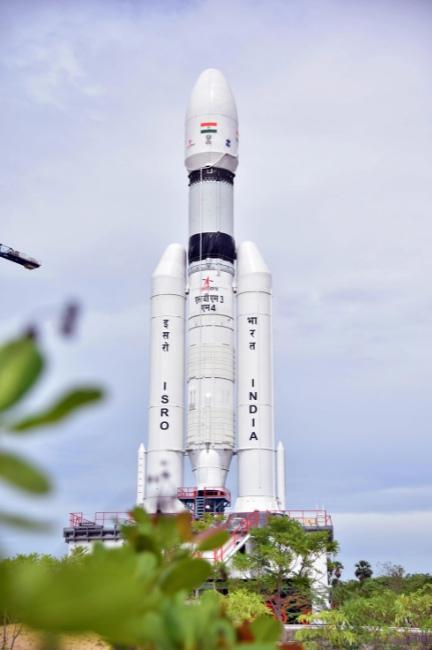
- Chandrayaan-3 was successfully launched on July 14, 2023, from the Satish Dhawan Space Center in Sriharikota, Andhra Pradesh, using the Launch Vehicle Mark-III (LVM3).
- The spacecraft consists of a lander, a rover, and a propulsion module, collectively weighing 3,900 kg.
- The GSLV Mark 3 heavy-lift launch vehicle, also known as the Bahubali rocket, supports the moon lander Vikram.
- The craft is scheduled to touch down on the Moon’s South Pole on August 23, following a journey lasting over 40 days.
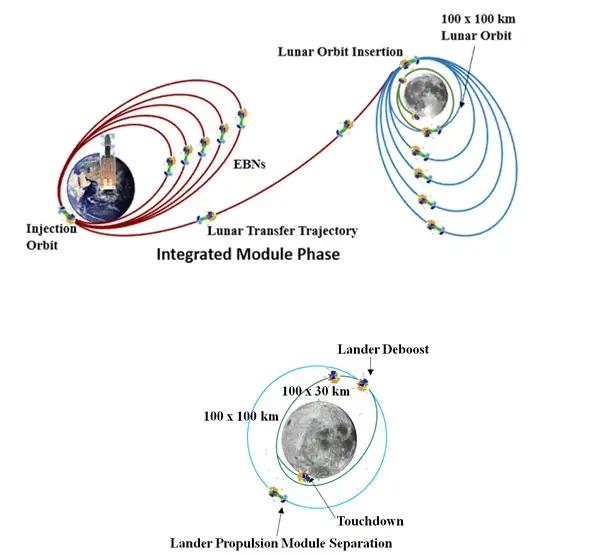
Objective:
The Chandrayaan-3 mission has three main objectives:

-
Safe and Soft Landing: The primary objective of Chandrayaan-3 is to achieve a safe and soft landing of the lander on the surface of the Moon. Learning from the previous mission’s setback, this mission aims to successfully land the lander module on the lunar surface without any issues.
- Demonstration of Rover’s Capabilities: Chandrayaan-3 aims to demonstrate the capabilities of the rover by showcasing its roaming and exploration abilities on the lunar surface. The rover will be deployed after the successful landing of the lander and will perform various scientific experiments and observations.
- In-Site Scientific Observations: The mission seeks to conduct in-site scientific observations and experiments to better understand the composition of the Moon. This includes analyzing the chemical and natural elements, soil, water, and other resources available on the lunar surface. These observations will contribute to expanding our knowledge of the Moon’s composition and provide insights into the Moon’s history and evolution.
Design:
Chandrayaan-3 consists of three main components:
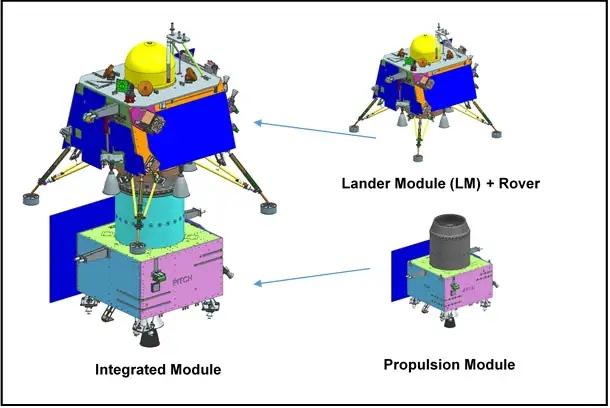
- Propulsion Module: The propulsion module is responsible for carrying the lander and rover configuration to the lunar orbit of 100 kilometers. It is a box-like structure with a large solar panel and an intermodular adapter cone that acts as a mounting structure for the lander. Additionally, it carries the SHAPE payload, which studies spectral and polarimetric measurements of Earth from the lunar orbit.
-
Lander: The lander module is designed for a soft landing on the lunar surface. It has a box-shaped structure with four landing legs and four landing thrusters. The lander carries the rover and various scientific instruments for in-site analysis. It has undergone improvements in terms of structural rigidity, impact legs strength, and instrumentation redundancy compared to its predecessor.
The lander carries three payloads:
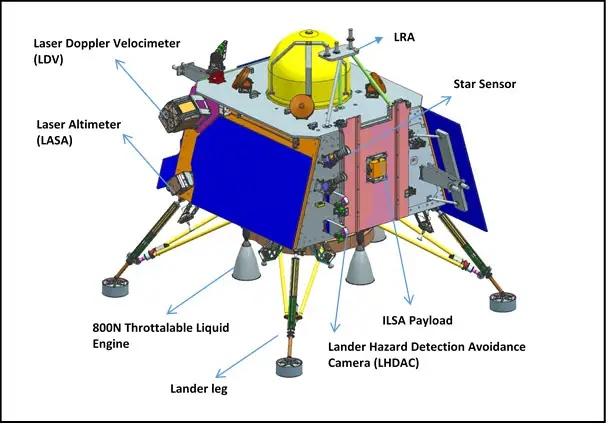
- Chandra’s Surface Thermophysical Experiment (ChaSTE): Measures thermal conductivity and temperature of the lunar surface.
- Instrument for Lunar Seismic Activity (ILSA): Measures seismic activity around the landing site.
- Langmuir Probe (LP): Estimates plasma density and its variations.
- Rover: The Chandrayaan-3 rover is a six-wheeled vehicle weighing 26 kilograms. It is equipped with scientific instruments, including cameras, spectrometers, and a drill. The rover has a range of 500 meters and is designed to communicate with the lander and the ground control team in India. Its expected lifespan is one lunar day, equivalent to 14 Earth days.
The rover aims to make significant scientific discoveries, including studying the lunar surface composition, detecting the presence of water ice in the lunar soil, investigating lunar impacts’ history, and studying the Moon’s atmosphere evolution.
Modifications and Precautions:
- Chandrayaan-3 has undergone modifications by ISRO to enhance reliability compared to its predecessor, Chandrayaan-2.
- The lander Vikram has been upgraded and carries additional fuel to ensure a successful landing and stay on the intended path to the lunar surface.
- The craft has undergone rigorous testing and incorporates numerous safety measures to increase the mission’s chances of success.
Mission Components:
- The 3,900-kilogram Chandrayaan-3 spacecraft consists of three major modules: the Propulsion module, Lander module, and Rover.
- The lander, named Vikram, and the rover, named Pragyaan, are similar to their counterparts in Chandrayaan-2 but have undergone upgrades for improved reliability.
- The mission’s budget is Rs. 615 crore.


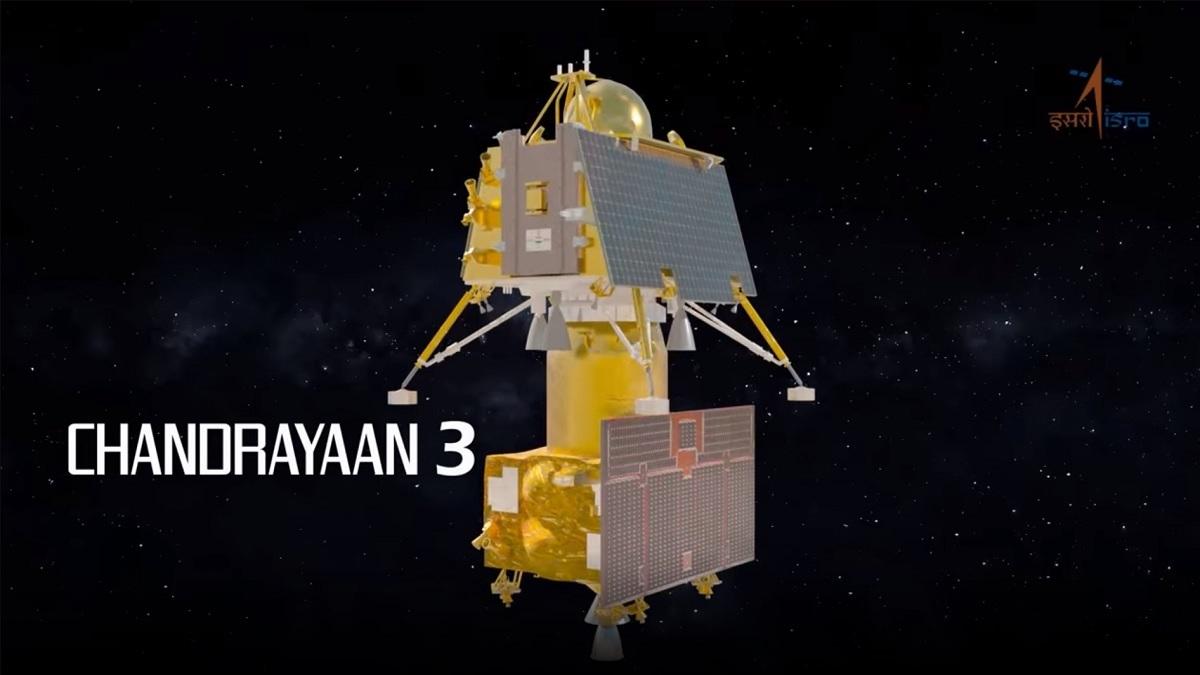
 Indian Olympic Medal Winners List Till N...
Indian Olympic Medal Winners List Till N...
 Who is the Inventor of the Gramophone?
Who is the Inventor of the Gramophone?
 HS Dhaliwal Appointed New DGP Of Andaman...
HS Dhaliwal Appointed New DGP Of Andaman...
